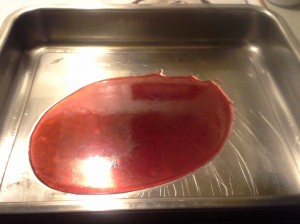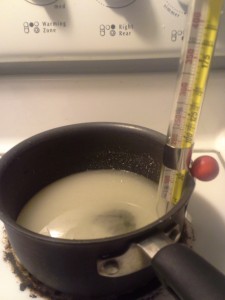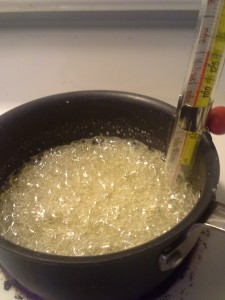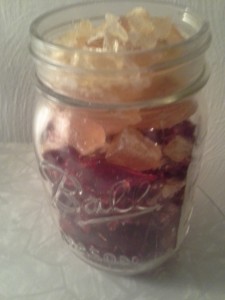Hard Candy: Homemade, Easy and Customized Sourness and Flavor

In the winter, we like to make hard candy, and we like it to be sour.
In this article, we’ll discuss an easy way to make delicious hard candy at home that and consider ways to dial up the flavors and sourness of your homemade hard candy!
{Of course, if you don’t like sour, you can skip that part.}
Overview of the Hard Candy Making Process
Hard candy making at home can be broken down into three easy components. The first is the candy base, the second is the flavoring and the third is the mold.
The overall process is to cook the candy base up to about 305 degrees Fahrenheit, remove it from the heat, stir in the flavoring, and then pour the mixture into the mold and let it cool.
Once cool, break up the candy into manageable pieces and enjoy. That’s it!
Candy molds
The mold for your candy can be anything. Many people just use a baking sheet, but you can use any container. It all depends on what shape or thickness you want.
The important thing to note is that once hard, the candy will be nearly impossible to get out of the mold, so it is best to grease or butter the bottom of the mold.
An alternative to that is to use powdered sugar on the bottom of the mold. Alternatively you can line the mold with aluminum foil for easily removal.
The candy usually doesn’t stick to the foil. Cool molds can be found here.

Candy Base
The base for our sour candy is
- 10 parts sugar
- 3 parts water
- 4 parts light corn syrup
You can make any amount of hard candy desired using this ratio.
In a small saucepan, combine the three ingredients and heat them up to 305 degrees Fahrenheit. You will need a candy thermometer.
Flavorings
The sourness of the candy is determined by how much citric acid you add. Citric acid can be purchased on Amazon like this very popular Pure Citric Acid or other places such as health food shops. A little goes a long way.
Experiment with how much citric acid you prefer. We like to use about a tablespoon or two for every cup of sugar used, but it’s best to make a few small batches and see what you prefer.
Of course, if you don’t want the candy to have that sour punch, don’t use any citric acid at all, it is not a necessary ingredient.
Regardless of sourness desired, you will want to add some additional flavoring to the candy. You can use liquid flavor extracts from the spice aisle of the grocery store or purchase some online, such as this raspberry extract that we like.
Once again, with flavoring, it’s best to experiment. It all depends on what we’re in the mood for at the time. The fun is experimenting with extracts and citric acid to see what you can come up with on your own.
An excellent way to experiment with flavorings is to make small test batches like the one below.
Test batch recipe (makes 1/3 of a pound of finished candy)
Ingredients
- 10 Tablespoons sugar
- 3 Tablespoons of Water
- 4 Tablespoons of Light Corn Syrup
- 1 Tablespoon of Citric Acid (use more if you want to)
- A Couple dashes of Raspberry Extract (go by the flavoring directions on the bottle or experiment to see just how much you prefer)
Directions
Grease a baking sheet and sprinkle with powdered sugar.
Set it aside. This will be the mold.
Prepare the flavoring. Combine citric acid and flavoring into a container, stir and set aside.
Attach a candy thermometer to the side of a small saucepan. Adjust the sliding clip on the thermometer and clip it to the side of the pan so that it is as close to the bottom of the pan as possible but not touching the bottom.

With a whisk, stir the ingredients thoroughly and turn the burner to high heat.
Occasionally stir while heating the mixture until the candy thermometer reads 305-310 degrees.

Once the temperature crosses the 300 mark, remove the pan from the heat and stir in the flavoring prepared earlier.
Stir the mixture with a whisk then immediately pour the contents onto the baking sheet. As it is cooling, sprinkle powdered sugar on top, if desired.
Let the candy cool down to room temperature.
Set the thermometer aside and let it cool down to room temperature before cleaning. Running it under cool water while it is hot may crack it.
Once the candy is cool, hit it with something such as the handle of a kitchen utensil to break up the candy into bite-sized pieces.
Enjoy!

Thanks for reading, and please share this article if you found it helpful.
Also, plan to check out all of the products that I recommend here at Try Backyard Farming, sorted into categories.